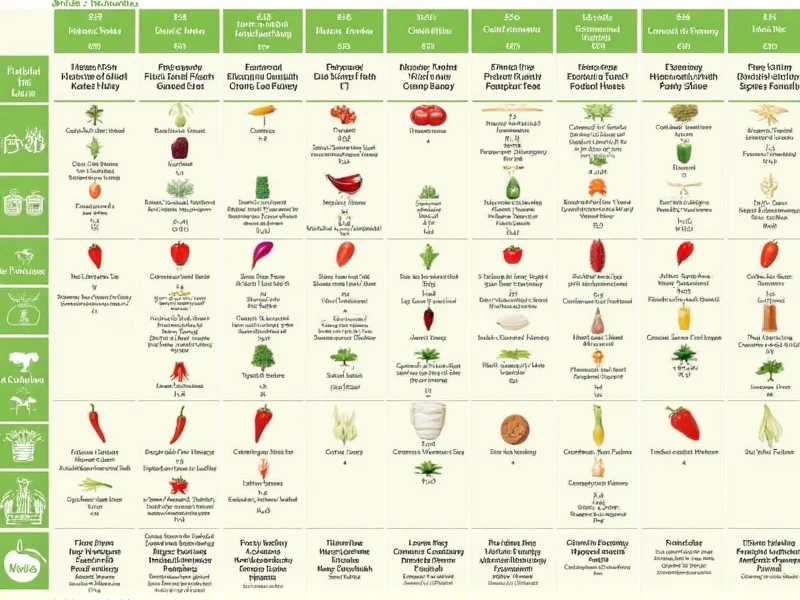Understanding the Scoville Heat Unit System
Developed in 1912 by pharmacist Wilbur Scoville, the Scoville Organoleptic Test originally measured heat through human taste panels. Today, high-performance liquid chromatography (HPLC) provides precise capsaicinoid measurements, which are then converted to Scoville Heat Units for consumer understanding. The scale remains essential for chefs, food manufacturers, and spice enthusiasts who need to predict and manage heat levels in culinary applications.
How the Scoville Scale Works
The original Scoville test involved diluting chili extract in sugar water until the heat became undetectable to a panel of five testers. The degree of dilution determined the Scoville rating. For example, a 5,000 SHU pepper required dilution 5,000 times before the heat disappeared. Modern HPLC methods measure actual capsaicin concentration and multiply by 15 to estimate Scoville units, providing more consistent results without human subjectivity.
Complete Scoville Unit Reference Chart
| Pepper Variety | Scoville Heat Units (SHU) | Heat Level Description |
|---|---|---|
| Bell Pepper | 0 SHU | No heat |
| Pepperoncini | 100-500 SHU | Mild |
| Poblano/Ancho | 1,000-2,000 SHU | Very mild |
| Jalapeño | 2,500-8,000 SHU | Moderate |
| Serrano | 10,000-23,000 SHU | Medium-hot |
| Cayenne | 30,000-50,000 SHU | Hot |
| Thai Bird's Eye | 50,000-100,000 SHU | Very hot |
| Habanero | 100,000-350,000 SHU | Extremely hot |
| Ghost Pepper (Bhut Jolokia) | 800,000-1,041,427 SHU | Devastatingly hot |
| Carolina Reaper | 1,400,000-2,200,000 SHU | World's hottest |
Interpreting Scoville Ratings: Important Considerations
When using a scoville unit chart for cooking or purchasing decisions, remember that heat levels vary significantly within pepper varieties due to growing conditions, soil composition, and climate. A jalapeño from one region might measure 2,500 SHU while the same variety from another area reaches 8,000 SHU. The chart provides general guidance rather than absolute measurements.
Understanding scoville heat unit ranges helps prevent culinary disasters. For instance, substituting a habanero (100,000-350,000 SHU) for a jalapeño (2,500-8,000 SHU) creates a dish approximately 40 times hotter than intended. This scoville scale chart with practical examples enables better ingredient selection for desired heat levels.
Modern Measurement Techniques vs. Original Scoville Test
While the original Scoville Organoleptic Test relied on human testers' subjective perception, modern laboratories use high-performance liquid chromatography (HPLC) to precisely measure capsaicinoid concentration. The results convert to Scoville Heat Units by multiplying the parts per million of capsaicinoids by 15. This scientific approach eliminates human variability while maintaining the familiar Scoville scale reference that consumers understand.
Practical Applications of the Scoville Scale
Chefs use scoville unit measurements to create balanced dishes with predictable heat levels. Food manufacturers rely on standardized scoville heat index charts to maintain consistent product quality across batches. Home cooks benefit from understanding scoville ratings when selecting peppers at grocery stores or farmers markets.
When working with extremely hot peppers (above 100,000 SHU), proper handling becomes critical. Always wear gloves when preparing ghost peppers or Carolina Reapers, and avoid touching your face. The scoville scale chart serves as both a culinary guide and a safety reference for managing intense heat levels.
Limitations of the Scoville Measurement System
The Scoville scale has several important limitations to consider. Individual tolerance to capsaicin varies significantly, meaning two people might experience the same pepper differently. The scale also doesn't account for the quality of heat—some peppers produce immediate burning sensations while others create delayed, longer-lasting heat.
Additionally, the scoville unit comparison doesn't reflect flavor profiles. Many hot peppers offer complex fruity or smoky notes beyond their heat measurement. Understanding these nuances helps culinary professionals select peppers based on both heat and flavor characteristics.
What does 1,000,000 Scoville units mean in practical terms?
A 1,000,000 Scoville unit rating indicates extreme heat intensity. Peppers at this level (like the Ghost Pepper) require extreme caution during handling. Just a small amount can overwhelm a dish, and direct contact with skin or eyes causes significant discomfort. For reference, this is approximately 125 times hotter than a typical jalapeño pepper.
How accurate are Scoville scale charts for home cooking?
Scoville charts provide useful general guidance but have limitations for precise home cooking. Actual heat levels vary within pepper varieties due to growing conditions. A chart showing jalapeños at 2,500-8,000 SHU indicates this natural variation. For consistent results, taste a small piece first and adjust quantities accordingly, especially with hotter varieties where small differences create significant heat variations.
Can the Scoville scale measure non-pepper spicy foods?
Yes, the Scoville scale applies to any food containing capsaicin, including hot sauces, spicy snacks, and prepared foods. However, many commercial hot sauces use capsaicin extracts that can exceed natural pepper limits, reaching 1,000,000+ SHU. Some extremely hot sauces use pure capsaicin (16,000,000 SHU) diluted to achieve specific heat levels beyond what natural peppers provide.
Why do some Scoville charts show different values for the same pepper?
Different Scoville measurements for identical peppers occur due to natural variation in capsaicin production. Factors like soil nutrients, water availability, sunlight exposure, and plant stress significantly impact heat levels. Laboratory testing methods also vary slightly between facilities. Reputable scoville unit charts show ranges rather than single values to account for this natural variability in pepper heat intensity.











 浙公网安备
33010002000092号
浙公网安备
33010002000092号 浙B2-20120091-4
浙B2-20120091-4